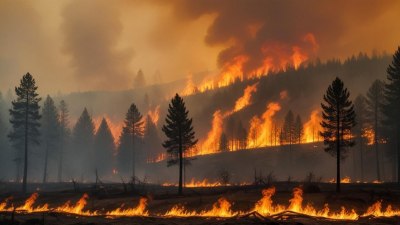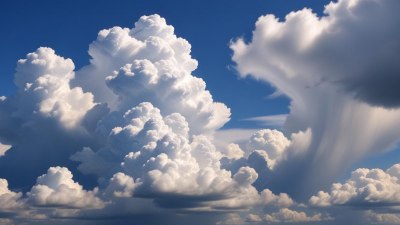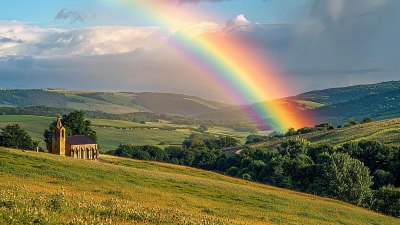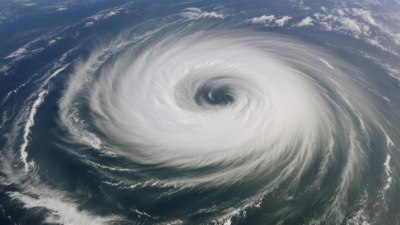The Connection Between Weather and Wildfires
Explore how weather influences the occurrence and severity of wildfires, impacting environments and communities.

This image was created with the assistance of Freepik
Wildfires have long been a natural part of many ecosystems, serving important ecological roles such as promoting new growth and maintaining biodiversity. However, the frequency and intensity of wildfires have significantly increased in recent years, raising concerns about their connection to weather patterns. Understanding this relationship is crucial for managing wildfires and mitigating their impact on communities and the environment.
Weather plays a critical role in the occurrence and severity of wildfires. Factors such as temperature, humidity, precipitation, and wind speed can create conditions that either promote or suppress wildfire activity. For example, high temperatures and low humidity levels dry out vegetation, making it more susceptible to ignition. Conversely, wet and humid conditions can help suppress the growth of fire. Therefore, tracking and understanding weather patterns is essential for predicting potential wildfire outbreaks.
The Role of Temperature
Temperature is one of the key weather elements influencing wildfires. Rising temperatures, especially during hot summer months, can lead to an increase in wildfire occurrences. Dry and hot weather creates ideal conditions for wildfires, as vegetation becomes parched and highly flammable. Moreover, higher temperatures can accelerate the drying process of fuel sources, which include grasses, shrubs, and trees.
Climate change has exacerbated the situation by pushing average global temperatures higher than ever before. Areas that traditionally experienced mild summers are now encountering extreme heat, which contributes to the increasing number of ignitions and the expansion of wildfire-prone areas. Research has shown that for every one degree Celsius increase in temperature, the area burned by wildfires increases significantly. This correlation highlights the critical need for climate action to reduce future wildfire risks.
Humidity and Its Impact
Humidity levels greatly influence wildfire dynamics. Low humidity environments enhance fire danger by desiccating vegetation and increasing its flammability. When humidity drops below a certain threshold, typically around 30%, the risk of ignition rises. Vegetation acts as the primary fuel during wildfires, and when humidity levels are low, it can ignite and burn more easily.
On the contrary, higher humidity levels can mitigate wildfire risks. High humidity conditions can help keep vegetation moist, reducing its flammability. This relationship emphasizes the vital role that weather plays in determining fire behavior. Weather systems that lead to prolonged dry conditions can contribute to the accumulation of dead plant material, creating significant fire hazards.
Precipitation and Fire Behavior
Precipitation is another key weather factor that influences wildfire activity. Rainfall can have both positive and negative effects. While it can alleviate drought conditions and reduce fire risk, excessive rainfall can lead to increased vegetation growth, known as a “fuel crop.” This phenomenon can eventually lead to more severe wildfires when dry conditions return, as the abundance of fuel can result in larger and hotter fires.
Thus, the timing and amount of precipitation can significantly alter fire risk profiles. In areas where the climate is characterized by wet and dry seasons, firefighters must remain vigilant after periods of heavy rainfall, as it can signal an imminent increase in fire activity when dry conditions return. Additionally, rain during fire season can be a double-edged sword; while it temporarily dampens fires, it might create ground conditions conducive to rapid regrowth, leading to future wildfire risks in subsequent years.
Wind: A Double-Edged Sword
Wind is among the most dangerous weather factors in wildfire scenarios. Strong winds can rapidly spread fires, carrying embers to new areas and igniting secondary fires far from the original blaze. Wind-driven wildfires can explode in size within minutes, leaving little time for evacuation or containment efforts.
Moreover, certain wind patterns can create erratic fire behavior, making it challenging for fire crews to control wildfires effectively. For instance, the Santa Ana winds in Southern California often coincide with wildfire outbreaks, as they create hot, dry conditions that promote rapid fire spread. Understanding wind patterns and their impact on fire behavior is essential for developing effective wildfire management strategies and for planning purposes.
Climate Change and Increasing Wildfire Violence
The link between climate change and wildfires is increasingly evident. As global temperatures rise and weather patterns shift, the elements that contribute to the ignition and spread of wildfires are exacerbating. The combination of higher temperatures, prolonged droughts, and changing precipitation patterns has created a perfect storm for intense wildfire seasons.
In many regions of the world, fire seasons are becoming more extended and severe. The Western United States, for example, has documented a significant increase in the number of large wildfires over the past few decades. This trend correlates with observed climate changes, suggesting that the interconnectedness of weather and wildfires is a pressing concern for fire management authorities.
Human Influence and Mitigation Strategies
While weather is a natural factor in wildfire occurrence, human activities also play a vital role in exacerbating the issue. Urban development in wildfire-prone areas, poor land management practices, and climate change induced by greenhouse gas emissions contribute to increased wildfire risks. As more people move into these vulnerable regions, the potential for property loss and threats to human life escalate.
To mitigate the impact of wildfires, it is essential to adopt better land management practices, improve community preparedness, and implement effective firefighting strategies. Strategies such as controlled burns, vegetation management, and emergency planning can significantly reduce fire risks and improve response capabilities.
The connection between weather and wildfires is a multifaceted issue that requires continued research and understanding. As climate change progresses, the relationship between weather conditions and wildfire activity will likely intensify, necessitating proactive measures to protect communities and ecosystems. Recognizing weather patterns and their implications can enhance wildfire management practices and reduce the devastating effects that wildfires can have on our environment and lives.











